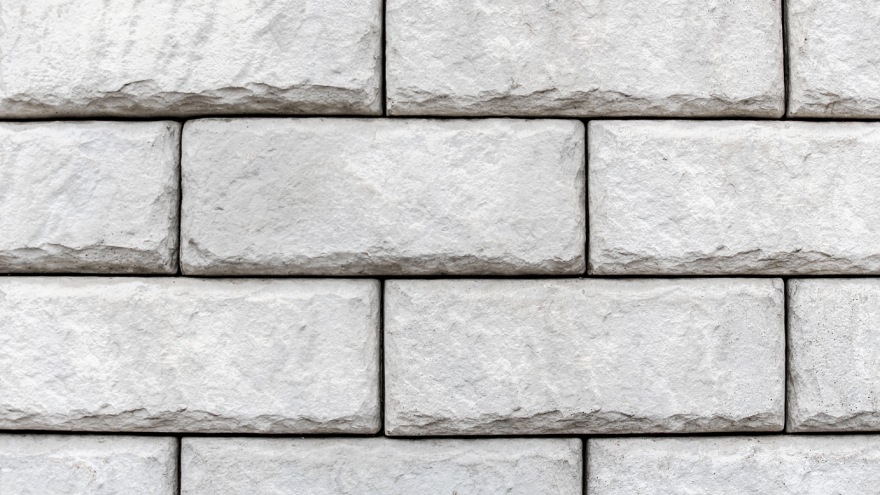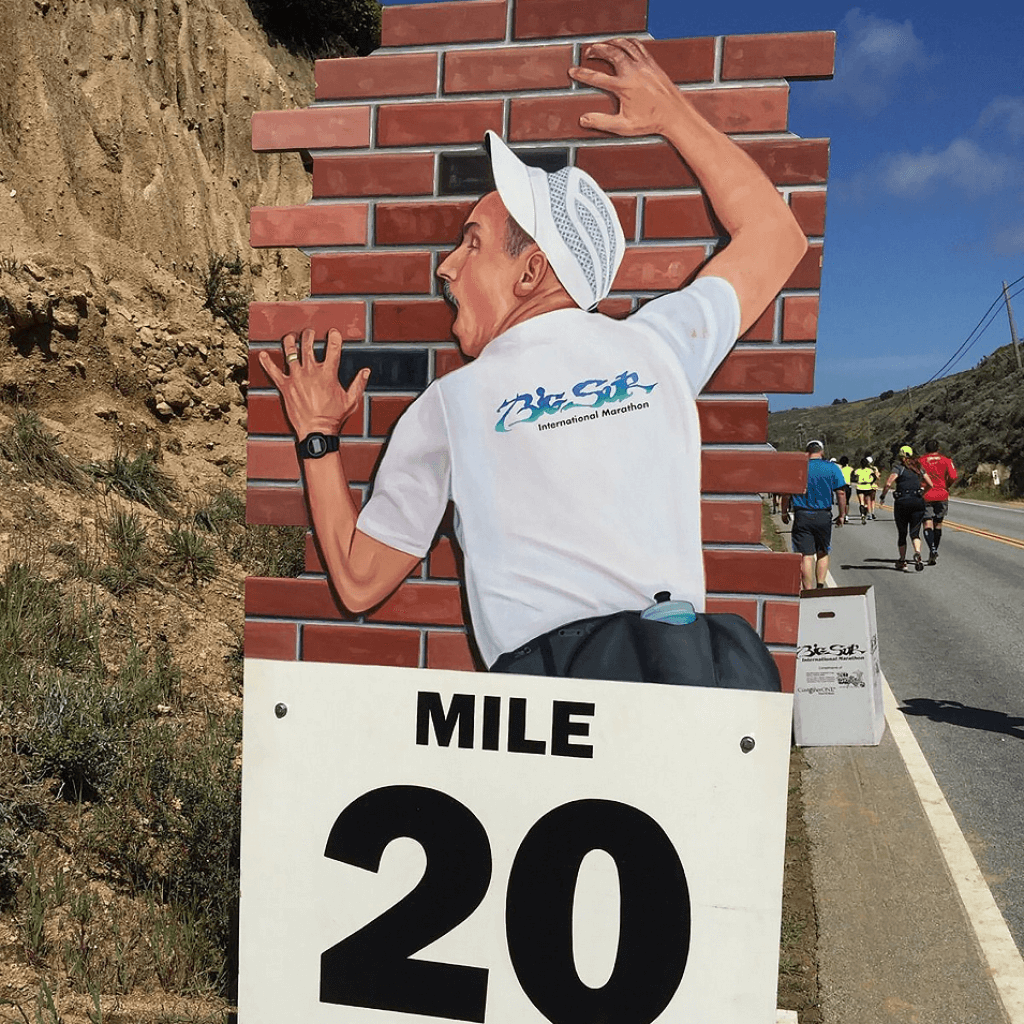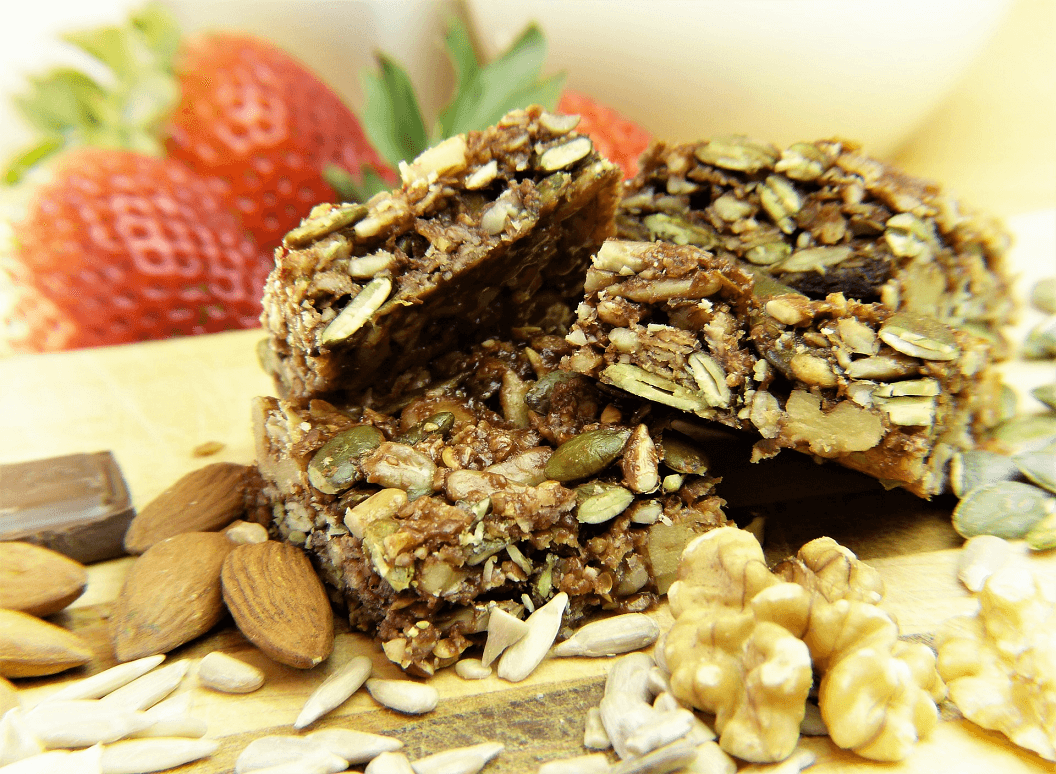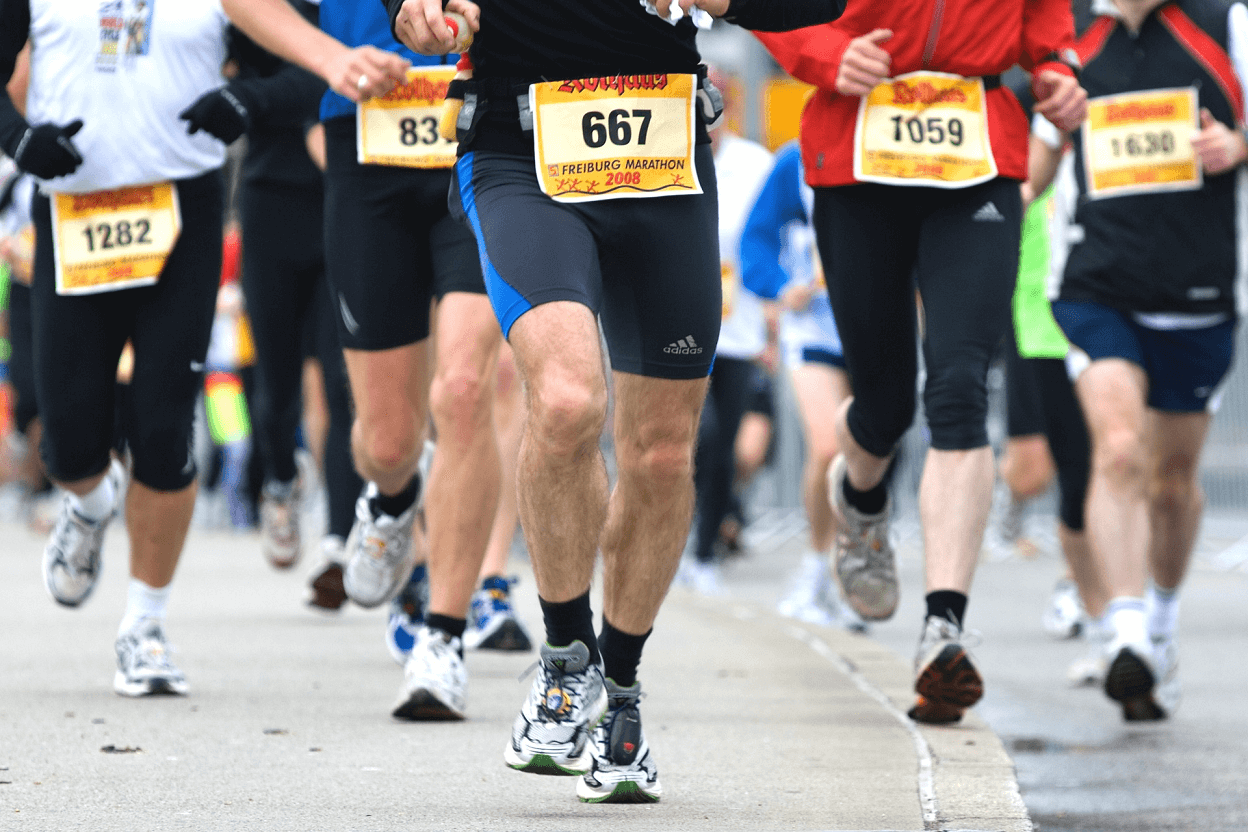Hitting the Wall: How It Happens and What You Can Do to Prevent It

It’s as much a part of post-marathon war stories as black toenails and bleeding nipples: Hitting the dreaded wall. And while turning into a zombie at mile 20 may make for the most colorful post-race stories, not bonking is obviously a much more pleasurable option.

So what exactly happens when you hit the wall? And is there a foolproof way to prevent it? Here’s what the experts have to say.
What exactly is “hitting the wall”?
In short, it is generally believed that runners hit the wall or bonk when the stored glycogen in their bodies become depleted. Glycogen, which is stored in the liver and muscles for energy, is basically a readily available energy source that is often preferred by the body during exercise. Note that the body uses a combination of stored glycogen and fat for fuel all the time. The ratio of the fuel used is, however, influenced by the type of activity you engage in. Speed work may, for example, require a greater percentage of more readily available glycogen, while long, slow runs will burn more fat.

However, some, like exercise scientist and running coach, Greg McMillan, believe that there’s more to it. In a nutshell, based on research done up until 2015, McMillan believes that bonking is a complex interaction of both peripheral and central factors, the former which includes muscle glycogen, blood glucose levels, muscle fatigue and damage. Or, in simple terms, the brain acts as the body’s central operating system and will do what it needs to do to keep you safe. Including shutting down some functions when fuel sources run out and activities appear too extreme.
Symptoms commonly experienced when hitting the wall include:
- Fatigue and feeling drained
- A “heavy” feeling in the legs
- A shuffling stride
- Labored breathing
- Feelings of negativity
- An urge to quit
- Hallucinations
Or, in the words of McMillan, bonking is “exhaustion of mind, body and soul”.
Why do marathoners usually hit the wall around the 20-mile mark of a marathon?
For most runners, the “wall” usually crops up at around the 18- or 20-mile mark of a marathon. Why? Our bodies are generally able to store between 1,800 and 2,000 calories’ worth of glycogen in the muscles and liver. In addition, the average runner uses approximately 100 calories per mile when running, depending on body mass and race pace. It’s therefore not hard to see, after doing the math, that the 20-mile mark is a spot where potential issues may arise.
Tips and tricks for avoiding hitting the wall
1. Fueling and hydration
And while, when taking this into account, it may seem as if the wall is unavoidable, take heart. It’s not. The key lies in tapping into that additional energy source that is used by the body, namely fat. But how do you do that? It’s important to note that your body requires the presence of some carbohydrates in order to facilitate the metabolic pathway that utilizes fat as fuel. It therefore makes sense not to wait until all your glycogen stores have been depleted before you ingest some easily digestible carbs. Instead, fuel early and often, i.e. before the onset of fatigue, in order to avoid running into trouble later on.

So, in short, be sure to tackle your race with a) a proper fueling plan, and b) adequate fuel. Exercise physiologist and running coach, Janet Hamilton, recommends ingesting carbs every 45 to 60 minutes during a marathon. She adds, however, that you may need more if you’re running at a higher intensity than normal. Also, don’t forget to drink to thirst right from the onset.
[Note that there is some controversy regarding including protein as race fuel. While some believe that it helps beat the bonk, others feel that it makes no difference. Plus it’s likely to upset the stomach. And while opinions on the matter varies, it’s vital that you ingest some carb-containing fuel on the run, preferably as recommended above. And, to save yourself the frustration of sitting with stomach issues 10 miles into a race, be sure to practice your fueling strategy before toeing the starting line.]
2. Mental tricks
Secondly, on the mental side of things, Hamilton suggests tuning out and focusing on something else when the distance ahead starts to overwhelm you. Count backwards from 100, make shopping lists in your head or dream about your post-run pizza fest. Just remember to occasionally check in with your body. Ensure your physical well-being by mentally noting your hydration status and running form from time to time.
3. Training and racing tips and tactics
According to running coach and father of the run/walk method, Jeff Galloway, the following training and racing tactics may also come in handy when trying to dodge the wall:
- Start conservatively. By pushing too hard and starting out too fast, you’ll use up your stored resources quickly and potentially run into trouble sooner. Always aim for running a negative split, i.e. running the second half of a race faster than the first.
- Aim to make your longest training run slightly longer than your race. Galloway found that his clients and retreat participants obtained the best results when clocking a 20 mile training run before doing a marathon.
- Long training runs must, however, be done at a slow pace. Galloway recommends doing your long runs 2 to 3 minutes per mile slower than your marathon pace.
- Include speed repetitions in your training program. For the marathon distance, Galloway has had most success with mile repeats (a maximum of 14 repeats in one session per week).
What to do if you do bonk
And if, despite your best efforts, you still hit the wall, how should you handle it? Nutritional therapist, Jo Scott-Dalgleish, recommends that you simply “slow down, ensure you are hydrated and consume a carbohydrate source slowly”. Be sure not to consume too much carbohydrates in one go, though, since your stomach might react unfavorably.
Don’t dread the distance
So instead of dreading hitting the wall during a marathon, or avoiding the distance altogether, prepare your body and mind for what lies ahead. Do enough long training runs and do them slowly. Experiment with different fuel sources on these runs and find something that is able to sustain you. And make sure that you start the race properly fueled.

Perhaps Susan Paul, exercise physiologist and program director for the Orlando Track Shack Foundation, says it best: “Training is more than just logging the miles. It is a total body process, and by the end of it you will be transformed into a runner that is prepared and ready to meet all the demands of the marathon. Between stored glycogen and stored fat, you actually have the ability to run many, many miles”.
Sources
- , Understanding Why You Hit “The Wall”, Online publication
- , Against the wall, Online publication
- , Avoid Hitting The Wall, Online publication
- , Do you bonk when you run?, Online publication
- , Training Tips: How To Avoid Hitting The Wall, Online publication
- , How to bonk-proof your running, Online publication
Latest Articles
 Is Running on a Treadmill Easier Than Running Outside?Runners have their own preferences, whether it is treadmill running, running outside on the road, or exploring trails. So...
Is Running on a Treadmill Easier Than Running Outside?Runners have their own preferences, whether it is treadmill running, running outside on the road, or exploring trails. So... Is It OK to Use Trail Running Shoes on the Road?While trail running shoes can be used on roads, especially in situations where a runner encounters mixed terrains or pref...
Is It OK to Use Trail Running Shoes on the Road?While trail running shoes can be used on roads, especially in situations where a runner encounters mixed terrains or pref... How to Fix Sore Quads After Running?Rest, ice, gentle stretching, and over-the-counter pain relievers can help soothe sore quads after running. Also, ensure ...
How to Fix Sore Quads After Running?Rest, ice, gentle stretching, and over-the-counter pain relievers can help soothe sore quads after running. Also, ensure ... 10 Fruits With The Most Electrolytes to Replace Sports DrinksThese fruits are high in electrolytes such as potassium, magnesium, and calcium, essential for hydration, muscle function...
10 Fruits With The Most Electrolytes to Replace Sports DrinksThese fruits are high in electrolytes such as potassium, magnesium, and calcium, essential for hydration, muscle function...

